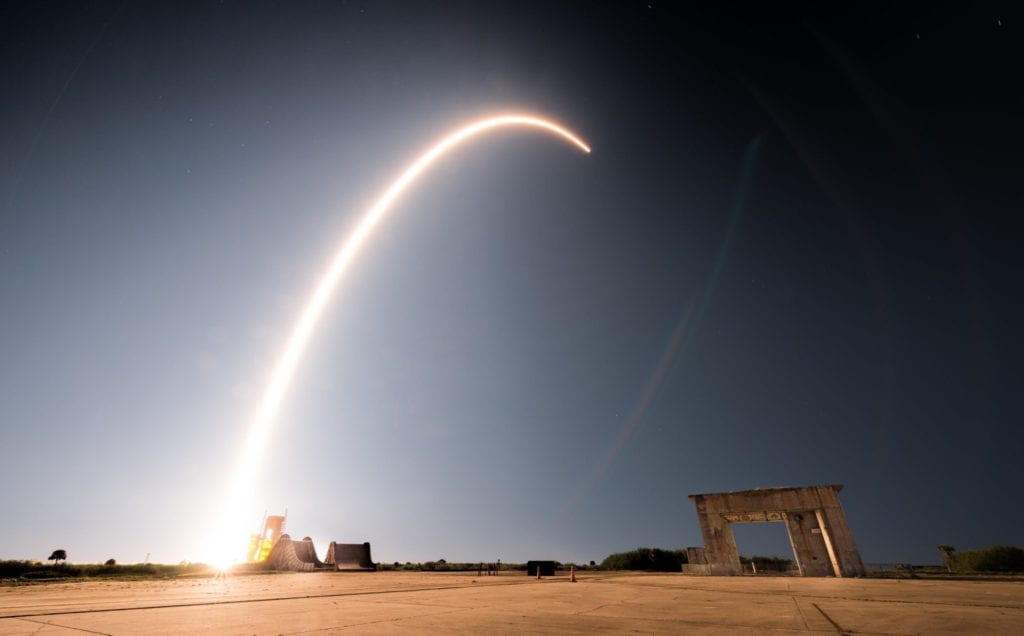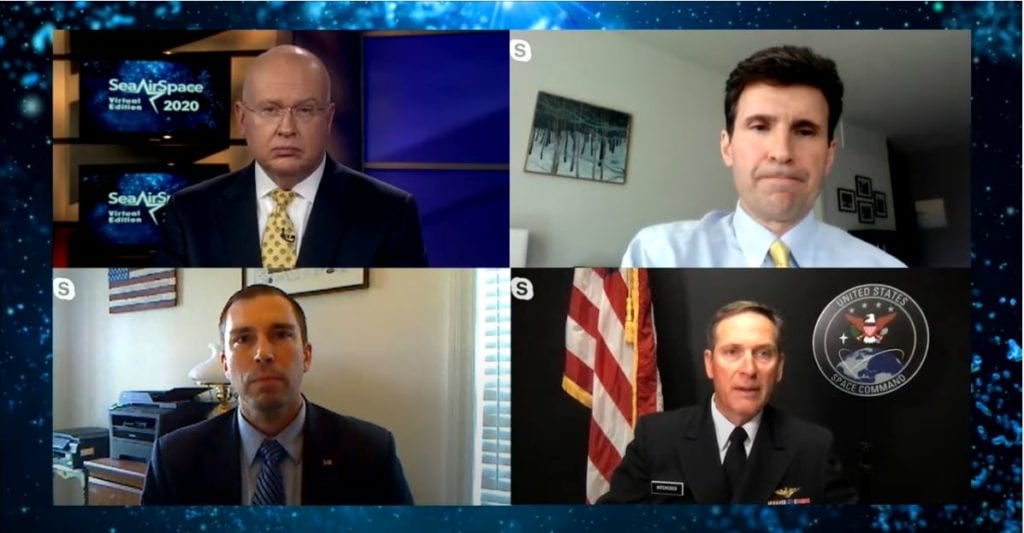
Space is not benign — no longer just the domain of unmanned scientific probes and occupied by astronauts in capsules or space stations exploring and conducting research, panelists stressed during a webcast that was aired on April 16 as part of the Navy League’s Sea-Air-Space 2020: Virtual Edition.
“Space, internationally, is very important to our way of life. It’s of strategic importance. We see our adversaries starting to weaponize space,” said Rear Adm. Marcus Hitchcock, director of strategy, plans and policy at U.S. Space Command, the unified combatant command responsible for American military operations in outer space.
To register and then watch this Sea-Air-Space 2020: Virtual Edition webinar live online, click here.
Other guests in the panel discussion, which was moderated by Francis Rose, included Derek Tournear, director of the Space Development Agency, and Christian Zur, executive director of the Procurement and Space Industry Council of the U.S. Chamber of Commerce.
“We’ve seen a massive explosion in everything space, at the national level and in our military,” Hitchcock observed, noting the establishment last year of the newest branch of the military, the U.S. Space Force. “Every morning we leap out of bed and we come in and stand the watch to maintain our space domain.”

The admiral observed that space has already seen its share of incidents, such as the 2017 launch of a missile by the People’s Republican of China, a “Great Power Competitor” along with Russia, that shot down a satellite in low-earth orbit. “This is a very real example of our adversaries or potential adversaries developing counter-space offensive weapons that can test our supremacy.”
A satellite recently launched by Russia also is believed to have the capability to damage or disable U.S. Military assets in orbit, Hitchcock added.
To maintain America’s strategic high ground in space, Tournear said the U.S. needs to maintain its technological advantage but speed up the frequency of its launches of defense assets.
“Space, internationally, is very important to our way of life. It’s of strategic importance. We see our adversaries starting to weaponize space.”
Adm. Marcus Hitchcock, U.S. Space Command
“In the last National Defense Strategy, it basically said we have the new technology, we have the best digital base, but we do not have the speed, and our adversaries are able to get capabilities in orbit in three- to five-year timeframes at the longest. At the shortest, we can do it in 10 years [but] usually it’s closer to 15.”
It’s the mission of the Space Development Agency to field U.S. capabilities to orbit faster, he added.
Moderator Rose observed that the NASA-based model had “flipped over the past few years,” where instead of U.S. efforts in space being led by the vaunted civilian government agency, space efforts are being pioneered by private industry — scientific and commercial endeavors but most especially defense applications.
Tournear countered that this development has led to companies building “hundreds of thousands” of satellites, commoditizing them and getting them to orbit quickly. “No longer does the government need to lead to make sure we develop the best technology,” he said. “We need to make sure we can get technology up there every two years.”
Zur picked up the discussion from private industry’s perspective.
He said the pairing of industry and defense technology for space started early, in the 1950s. Once the Defense Department started seeking technology for space, notably computer chips, costs per chip started going down. That trend has stretched into today, Zur said.
Rose touched on the responsibility that commercial industry and governments hold to mind how they maintain low-earth orbit. Zur talked about space debris but also private industry’s role as caretaker.
“While I could argue that there aren’t really enduring procedures that are accepted among all the players, and in large part militaries around the world have different objectives, we in the U.S. have kind of taken the lead in the commercial use of space. These norms and procedures have to be established, not only from a regulation standpoint, it’s simply best business practices. We’re just at the beginning stages of this.”
Hitchcock agreed with Rose that it’s important for U.S. Space Command to know what commercial assets are in orbit, where they are and what function they are serving. The U.S. is “getting better at looking up and understanding what is in space,” he added.
He described a new radar that recently went active that can map and track assets of all kinds — U.S. governmental, foreign and commercial. Older tracking counted some 25,000 objects in orbit, only 2,000 of which were actual satellites or other platforms, he said. “The rest of it was debris, trash. We think our understanding of what’s up there will increase tenfold as this ‘space fence’ comes online, and we might see as many as 250,000 different objects up there.”






